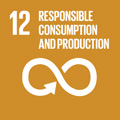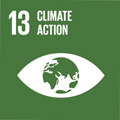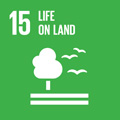- Docente: Andrea Boeri
- Credits: 4
- SSD: ICAR/12
- Language: Italian
- Moduli: Andrea Boeri (Modulo 1) Danila Longo (Modulo 2)
- Teaching Mode: In-person learning (entirely or partially) (Modulo 1); In-person learning (entirely or partially) (Modulo 2)
- Campus: Cesena
- Corso: Single cycle degree programme (LMCU) in Architecture (cod. 0881)
Learning outcomes
The aim of this module is to provide students with the knowledge useful for guiding them along a path of analysis and study of the variables of the context and of the tools the architect manages and controls, the coherence between the architectural choices and sustainable technological solutions, during the early stages of the project. The skills acquired by the students will enable them to exercise an independent judgment and ability in assessing which control tools, technologies and operating procedures are to be applied, depending on the feasibility of the project.
Course contents
The Sustainable Architecture Design Studio [16 CFU – 192 hours] embeds the following teaching modules:
- Sustainable Design Technologies I [2+2 CFU – 24+24 hours]
- Sustainable Design Technologies II [4 CFU – 48 hours]
- Energy performance evaluation [4 CFU – 48 hours]
- Sustainable Design [2 CFU – 24 hours]
- Energy Savings Design [2 CFU – 24 hours]
The core contents of the studio are addressed to energy efficient and sustainable architecture, aiming to control the process as whole in relation with boundary conditions and complex contexts.
The Laboratory focuses on the design of environmentally sound low-energy architectures, combining first-rate formal quality and expressive coherence to high performances as regards to functional adequacy and comfort and with a minimum impact on ecosystem resources along all the life-cycle.
Design shall take into account the aspects of complexity and articulation affecting the design / construction process of a building.
the Laboratory will deal with the design of a building with minimal environmental impact, characterized by construction solutions for certification in the best energy classes envisaged by current legislation on the containment of energy consumption in Emilia-Romagna.
The activity will be accomplished according to a schedule, organized by progress reports. Work progress reports (SAL, Stato di Avanzamento Lavori) are the base for periodical review and control of the development achieved in the various design phases of the Laboratory projects.
Readings/Bibliography
Title: Energy Design Strategies for Retrofitting. Methodology, Technologies and Applications Authors: A. Boeri, E. Antonini, J. Gaspari, D. Longo WIT Press, Southampton (UK), Boston (USA), 2015. ISBN 978-1-84564-998-2 - eISBN 978-1-84564-999-9
A. Boeri, E. Antonini, D. Longo, "Edilizia sociale ad alta densità. Strumenti di analisi e strategie di rigenerazione: il quartiere Pilastro di Bologna”, ISBN 978-88-615-9854-6, Bruno Mondadori Editore, Milano, 2013.
R. Di Giulio, A. Boeri, M.C. Forlani, A. Gaiani, V. Manfron, R. Pagani, “Paesaggi periferici. Strategie di Rigenerazione urbana”, ISBN 978-88-7462-552-9, Quodlibet, Macerata, 2013.
A. Boeri, E. Antonini, Progettare scuole sostenibili-Criteri, esempi e soluzioni per l'efficienza energetica e la qualità ambientale, EdicomEdizioni, Monfalcone (Gorizia) 2011.
A. Boeri, J. Gaspari, A multi-layer approach to urban re generation: energy efficiency and comfort condition optimization- Un approccio multi-layer alla rigenerazione urbana: efficienza energetica e ottimizzazione delle condizioni di comfort in Techne – Journal of Technology for Architecture and Environment n°10/2015, ISSN print 2240-7391, ISSN online 2239-0243, FUP Firenze University Press, Firenze, 2015, pp. 214-221.
A. Boeri, E. Antonini, J. Gaspari, V. Gianfrate, D.Longo, The quality of school buildings: a national emergency, a research field - La qualità dell’edilizia scolastica: un emergenza nazionale, un ambito di ricerca, in Techne – Journal of Technology for Architecture and Environment n°9/2015, ISSN print 2240-7391, ISSN online 2239-0243, FUP Firenze University Press, Firenze, 2015, pp. 114-122.
2014 A. Boeri, K. Fabbri, IAQ evaluation i kindergarten: the Italian case of Asilo Diana, in Advances in Building Energy Research, 2014, Taylor & Francis, London, pp. 1-18. ISSN 1751-2549 (Print), 1756-2201 (Online). DOI:10.1080/17512549.2014.890532. http://www.tandfonline.com/doi/full/10.1080/17512549.2014.890532
2013 A. Boeri, D. Longo, Environmental Quality and Energy Efficiency: Sustainable School Buildings Design Strategies, in International Journal of Sustanable Development and Planning Vol.8 No 2, 2013 WIT Press, Southampton (UK), ISSN: 1743-7601, on line ISSN: 1743-761X, pagg. 140-157. DOI: 10.2495/SDP-V8-N2-140-157
22- 2012 A. Boeri, D. Longo, From the Redevelopment of High-density Suburban Areas to Sustainable Cities, in Architectoni.ca - Architecture Journal of CCAAS, Vol.2, 2012, Canadian Centre of Academic Art and Science, Toronto (Canada), ISSN: 1927-7148(print) ISSN: 1927-7156 (on line), pagg. 118-130.
23- 2011 A. Boeri, D. Longo, Energy efficiency in buildings in southern Europe: challenges and design strategies, in International Journal of Sustanable Development and Planning Vol.6 No 4, 2011 WIT Press, Southampton (UK), ISSN: 1743-7601, on line ISSN: 1743-761X, pagg. 522-536. DOI: 10.2495/SDP-V6-N4-522-536
J. Rifkin, La terza rivoluzione industriale, Edizioni Mondadori, 2011.
R. Heinberg, La festa è finita. La scomparsa del petrolio, le nuove guerre, il futuro dell'energia, Fazi, Milano, 2004
Leggett, Jeremy, Fine corsa, Einaudi, Torino, 2006
Tiezzi Enzo, Marchettini Nadia, Che cos'è lo sviluppo sostenibile?, Donzelli Ed., Roma, 1999
A. Boeri, Criteri di progettazione ambientale, Editriale Delfino, Milano 2007
K. Fabbri, Guida alla riqualificazione energetica, Edizioni Dei, Roma 2007
D. Longo, Decostruzione e riuso. Procedure e tecniche di valorizzazione dei residui edilizi in Italia, Alinea, Firenze, 2007
J. Gaspari, Trasformare l'involucro: la strategia dell'addizione nel progetto di recupero, EdicomEdizioni 2012
A. Boeri, D. Longo, S. Piraccini, Il progetto dell'involucro in legno – Qualità costruttiva ed efficienza energetica, Dario Flaccovio Editore, Palermo, 2012.
C. Benedetti, Progetto ambiente, Edizioni Kappa, Roma 2003
L.Tronchin, Elementi di fisica tecnica e controllo ambientale, Editrice Esculapio, Bologna, 2006
Gauzin-Muller; Architettura sostenibile. 29 esempi europei di edifici e insediamenti ad alta qualità ambientale, Edizioni Ambiente, 2003
O. Mendler, The HOK guidebook to Sustainable design, John Wiley & Sons Canada 2000
Teaching methods
The laboratory usually foresees the presence of students in classroom for the gradual elaboration of the architectural design, but guarantees the online attendance by students who prefer this method.
The activity will develop according to a schedule organized by progress reports (SAL). Each SAL will be mainly dedicated to the resolution of a specific design aspect.
The SAL consists in the writing of a sinthesis document to be delivered at set dates and then told to the other students and lecturers of the Laboratory, to submit it to a critical review (design review).
Assessment methods
The exam embeds the assessment of the contents of all the modules and teaching activities included in the design studio and consists in a unique evaluation.
Seminars and reviews are envisaged in order to assess the progress of the projects. Theretical background and references are assessed during the courses according to technological choices. The projects are the results of a progressive development and the final examination is based on a presentation of the finidings and theoretical references as well as on the discussion of drawings and document produced.
For this type of teaching (Final Synthesis Laboratory), the Didactic Regulations provide for a verification of the students' suitability to start the preparation of their degree thesis. The progress of learning is monitored during the course of the Program, through periodic reviews. The verification of the student's suitability is carried out in a single test, common to all the modules of the Laboratory, placed at the end of the Laboratory itself. The verification aims to ascertain the individual level of learning achieved, in relation to the contents of all the modules / courses that make up the Laboratory (C.I.). The verification consists in the illustration by the student and in the discussion with the Commission of the design documents produced and also includes the verification of theoretical and instrumental knowledge relating to the topics covered in the laboratory. The assessment of suitability is based on the weighted application of the following three criteria: knowledge of theoretical content and bibliography and acquisition of instrumental skills (30%), level of depth of the design hypothesis (30%), clarity and effectiveness in the presentation (40%).
Teaching tools
The laboratory usually foresees the presence of students in classroom for the elaboration of the architectural design, but guarantees the online attendance by students who prefer this method.
All phases will be followed and backed by the professor, tutors and didactic collaborators.
The Department library is a useful support for specific documentation and investigation.The equipment supplied by the Department of Architecture, the Cesena Campus and all the technological support for the teaching activity provided by the University (screens, projectors, technologies for remote connection, IT supports, etc.) are used.
Office hours
See the website of Andrea Boeri
See the website of Danila Longo
SDGs




This teaching activity contributes to the achievement of the Sustainable Development Goals of the UN 2030 Agenda.
